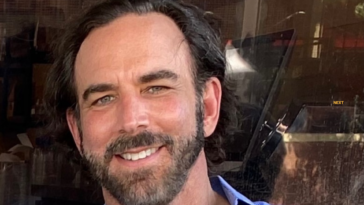Current Health Coverage for HIV and AIDS Patients
Every day, the rising costs of medical insurance and healthcare puts those with complicated health issues like HIV and AIDS in difficult financial positions, like choosing treatment or putting food on the table. In hopes of combating these financial burdens, the The Affordable Care Act (ACA) was created in 2010.
The ACA improved access to healthcare coverage by requiring mandatory access to health insurance for patients with pre-existing conditions at the same rates as those without pre-existing conditions. It provided broader Medicaid eligibility, more affordable coverage options, and lower prescription costs for Medicare recipients.
The Medicaid program provides the largest payout for HIV care in the United States to date. By expanding Medicaid eligibility for patients, it was able to reach the most vulnerable individuals. It was important for many gay and bisexual men who were previously ineligible for Medicaid but who remained the most affected population of the HIV epidemic.
The Future of HIV Medication and Research
Initially, after the epidemic of HIV and AIDs hit the world in the 1960-1970s, treatment options began to pop up almost as if overnight. They helped to extend the life and quality of an individual while they adjusted to their positive status. But for some time after the initial discovery of treatment options, the release of new treatments options halted.
The standard of care today is found among antiretroviral therapy (ART), a combination of multiple antiretroviral medications that help slow the HIV virus from replicating indefinitely. There are six types of standard medications such as NRTIs, NNRTIs, PLs’, and more, all which help prevent HIV from cloning inside the body.
The hope is that science and big pharma can continue to build on the foundation of discoveries like Gene Therapy, Stem Cell Therapy, and Immunotherapy. There is a goal to create a long acting formulation of ART that is fully suppressive of the virus and only dosed every 6 months or longer. The expectation is that a safe and effective HIV vaccine will make its way onto the market place in the next couple of years. Though a cure may not happen in the next year, it is predicted that we may see a cure as soon as 2020 with the use of therapies already on the market.
The Future of HIV/AIDS Healthcare Coverage
Taking care of vulnerable populations should be the forefront of the political mind, but recently, this was not the case. In early 2017, President Donald Trump brought forth a plan to repeal and replace the Affordable Care Act. The main policies under scrutiny stood to affect people with HIV the most.
- Changes to Medicaid: Medicaid is single handedly the largest source of coverage for people in the United States with HIV. Under the Repeal and Replace Act, low-income individuals who are HIV positive would not qualify for Medicaid until they were already sick, disabled, or suffering from the effects of AIDS.
- Changes to Pre-Existing Conditions: The Repeal and Replace Act brought forth would allow states to use a waiver to charge people who suffer from pre-existing conditions a higher premium. It would also allow insurance companies to sell coverage that doesn’t include the Essential Health Benefits covered and required today. Combined, this would limit HIV patients access to affordable, effective treatment.
- Budget Cuts to Current Programs: The bill brought forth by President Trump would cut money flowing into programs like the Ryan White CARE act, while simultaneously cutting Medicaid benefits. The cutting of Medicaid benefits would require HIV and AIDS patients to access alternative programs like the Ryan White CARE act for treatment. With a potential loss of income to these alternative programs, it is unclear if the programs would be able to take on the number of new patients that would lose coverage.
Luckily, this bill is DOA (dead on arrival), meaning that the future of health benefits for those with HIV and AIDS looks as great as it did before Donald Trump took office, with no major changes in healthcare coverage projected to happen in 2018.
![[ IMSTILLJOSH ]](https://imstilljosh.com/wp-content/uploads/2020/09/9A79D7E4-5626-422E-ABC0-F601C8891E6A.png)























